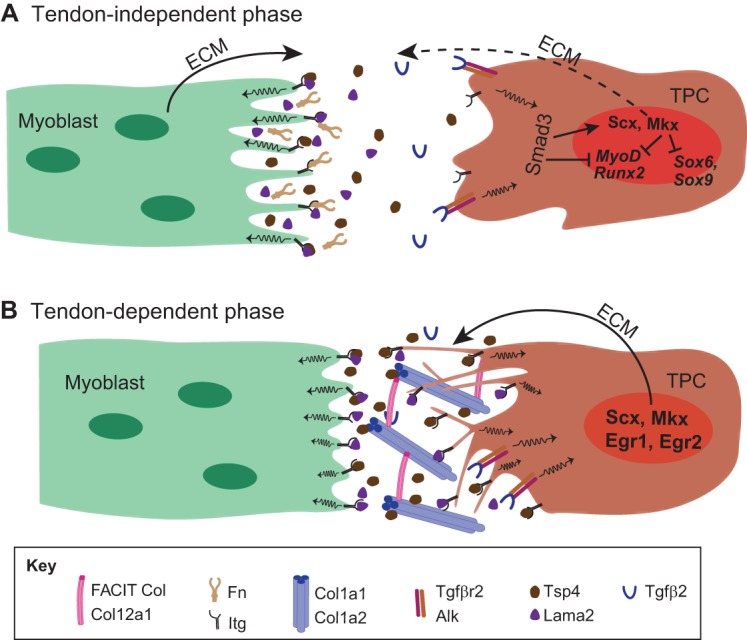Fig. 3.

Myoblast-tenocyte interactions and ECM production. (A,B) The formation of myotendinous junctions can be considered as a two-step process. In the initial tendon-independent phase (A) in vertebrates (shown here for zebrafish trunk muscles), myoblasts (green) synthesize a ‘pre-tendon’ ECM that includes the integrin ligands Tsp4 and Lama2. This ECM accumulates in the absence of TPCs (brown). Mechanotransduction coupled with TGFβ signaling (through Tgfβ2 and Tgfβr2) leads to the Smad3-dependent expression of Scx and Mkx in TPCs, which in turn leads to the expression of tendon-selective ECM genes. Smad3 and Mkx also repress the activity of MyoD, Sox9 and Runx2 to repress myogenic and skeletogenic fates during tenocyte differentiation. A later tendon-dependent phase (B) relies on the production of ECM, particularly Col1a1, Col1a2, Col12a1 and Col14a1, by more mature TPCs, which extend processes into the ECM.
